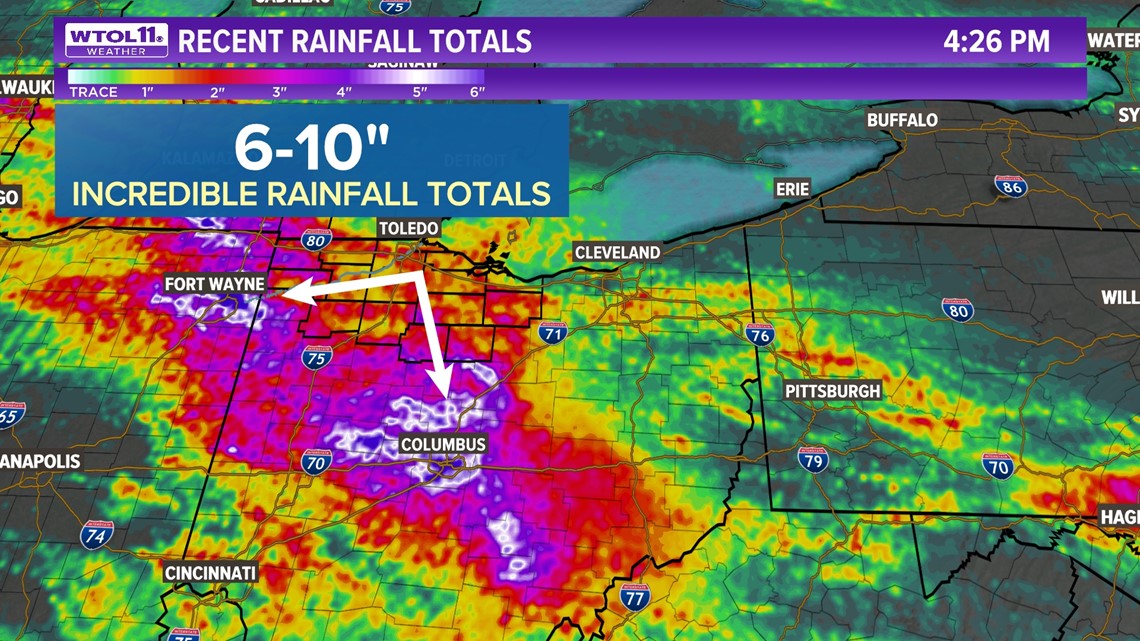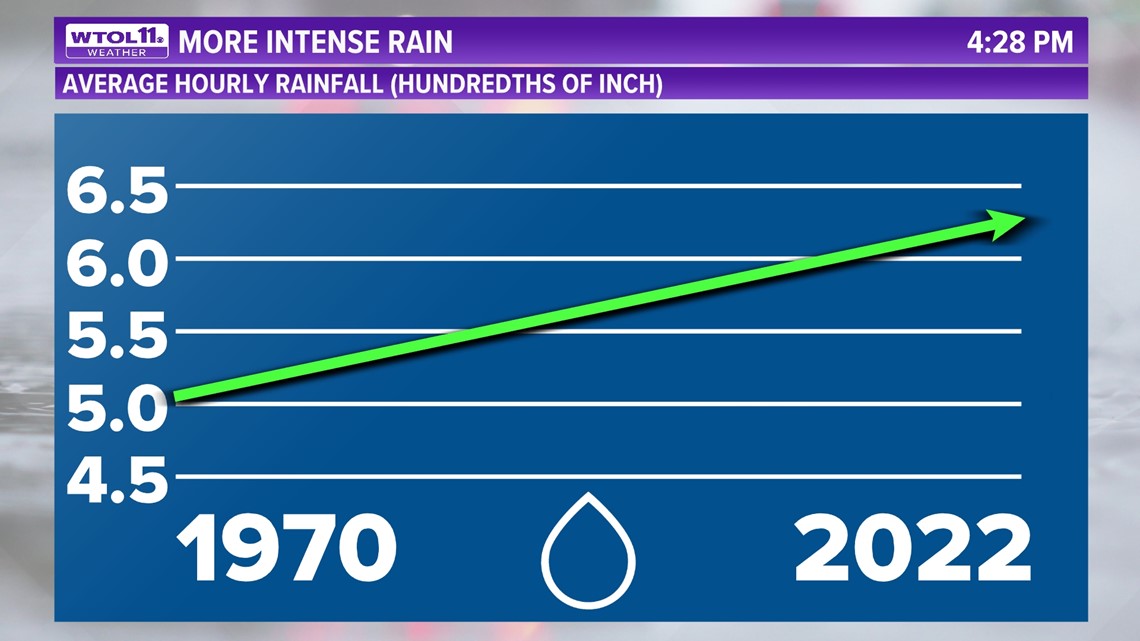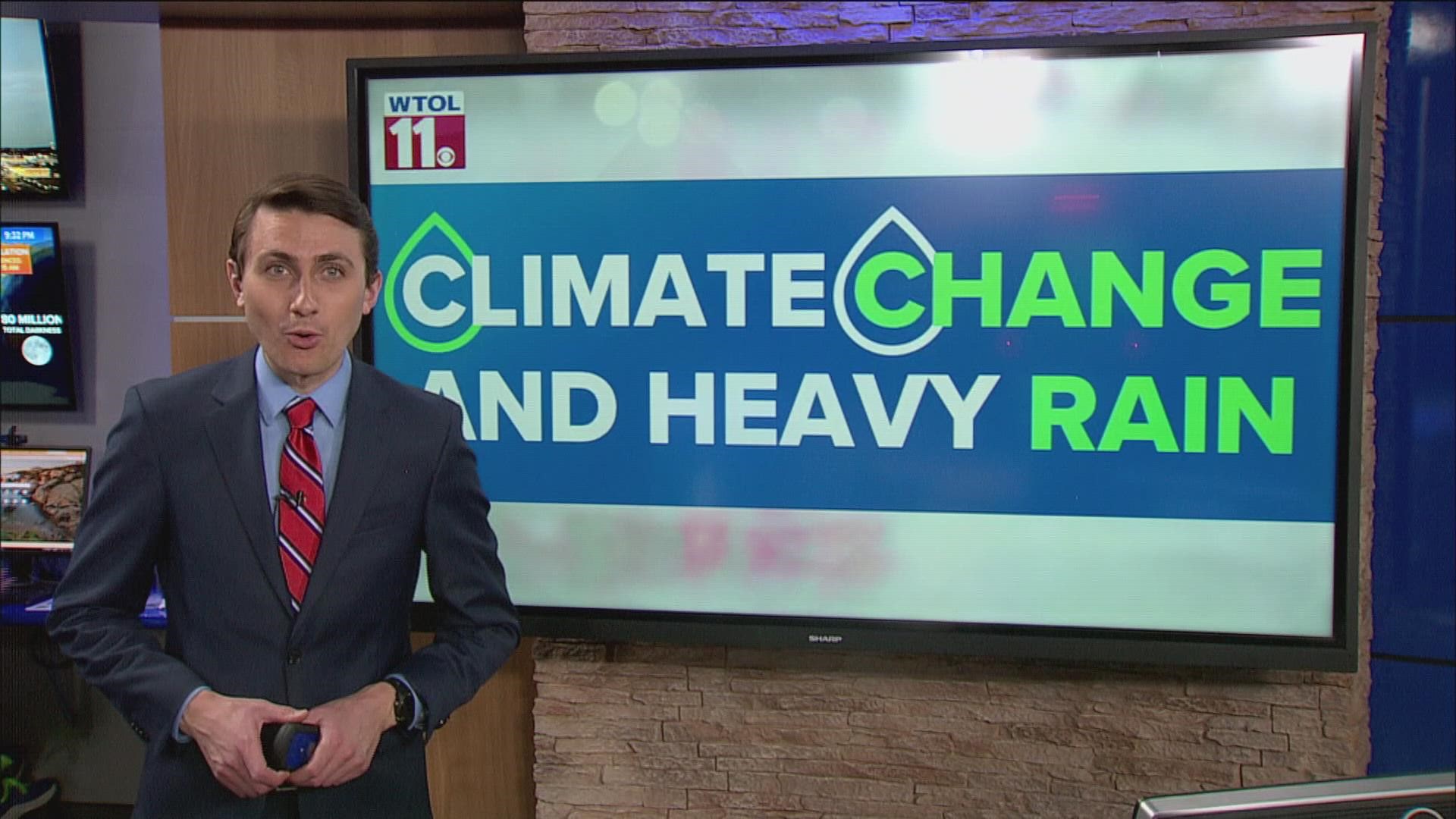TOLEDO, Ohio — When it rains, it pours.
This week dosed out soaking rainfall and widespread flooding for much of northwest Ohio. Parts of Ohio and Indiana saw 6-10 inches of rain this week, leading to flash flooding and standing water.
Northwest Ohio and southeast Michigan received a more gentle rain, picking up rainfall amounts of 1-3 inches.
Heavy rain like this week's is growing more common due to climate change. While rain is needed for farmers and gardeners, too much of a good thing can cause negative consequences.
In the Midwest, agriculture is king, and after a successful planting season, farmers depend on summer rainfall. While gentle rain from time-to-time provides needed moisture for crops, flooding rainfall can cause irreversible damage to farm fields.
This week's rainfall provided necessary moisture in northwest Ohio, but flooded fields in other areas. Fort Wayne, Ind., picked up nearly 9.2 inches of rain. Torrential rainfall also caused flash flooding near Columbus, dumping 5-8 inches in central Ohio. This extreme rainfall just barely missed Toledo to the southeast by a matter of miles.


A slight shift in the jet stream could have resulted in severe flooding in northwest Ohio and southeast Michigan. Thankfully, we dodged a bullet with this storm system.
So why are intense rainfall and flash flooding growing more common due to climate change? It all boils down to the water cycle.
Imagine boiling water on the stove. If the burner is set to high, the water will boil faster than if it's set to low. Similarly, warmer temperatures cause water in oceans and lakes to evaporate more readily. Just one degree of warming corresponds to a 4% increase in atmospheric moisture.
We live in a world in which the metaphorical burner has been set to high.
Not only have climate scientists observed more rain, but also heavier rain, leading to flash flooding. In Toledo, hourly rainfall rates have increased over 25% in the last half century.


Since 1970, the average rate of hourly rain has risen from 0.05 of an inch of nearly 0.065. In other words, when it rains, it pours, and rainfall events are growing more intense.
This shift in precipitation rates is reflected in annual rainfall, which since 1970 has risen by 2% overall and 7% in the spring season. Even though summer weather has become slightly drier in recent decades, overall trends reflect a wetter shift in weather due to climate change.
Much of the United States, especially the Midwest and Great Lakes region, has seen an uptick in rainfall amounts. Only the Pacific coast and southeastern United States has observed a rainfall decline. Overall, the country is growing rainier due to climate change, and heavy downpours and flash flooding are growing more common.
Even though Toledo missed out on the flooding rain this week, the next storm system might strike northwest Ohio in the bullseye. As we round the corner on this wet weather pattern, stay tuned to the WTOL 11 weather team for the latest 10-day forecast.
RELATED VIDEO

